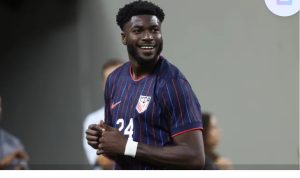
New York Yankees Set New Leadership: A Turning Point in the Franchise’s Legacy
The New York Yankees, one of the most storied franchises in all of professional sports, have once again found themselves at a crossroads. After a period of mixed success and growing frustration among fans and analysts, the Yankees have made a major decision to set a new direction for the organization. This decision, marked by changes in leadership, signals a critical turning point for the team as they look to return to championship contention.
The Yankees have long been synonymous with success, winning 27 World Series titles, the most in Major League Baseball (MLB). Over the decades, the team has maintained a high standard of excellence, driven by the leadership of legendary figures both on and off the field. From iconic players like Babe Ruth, Lou Gehrig, and Joe DiMaggio, to recent stars like Derek Jeter and Mariano Rivera, the Yankees have always set the bar for success in the sport. However, after a series of seasons without a championship and a failure to consistently reach the World Series, the franchise’s leadership has come under intense scrutiny.
A New Era: The Decision to Shake Things Up
The leadership shake-up began with the announcement that the Yankees would be making changes in both their front office and coaching staff. For years, the franchise had been led by general manager Brian Cashman and manager Aaron Boone, both of whom were seen as stabilizing forces for the team. Cashman, who took over as GM in 1998, had overseen a period of relative success, including four World Series championships. Boone, who became the manager in 2018, had helped guide the team through some of their most competitive seasons in recent memory, including a run to the American League Championship Series (ALCS) in 2019.
However, after failing to win a World Series since 2009, the pressure on Cashman and Boone became undeniable. The team’s inability to secure a title, coupled with an inconsistent postseason performance, created an atmosphere of frustration among fans and analysts alike. Many began questioning whether the leadership had grown complacent and whether the franchise needed a change in direction to return to its former glory.
The Key Moves: Leadership Changes
In response to growing criticism, the Yankees’ ownership, led by Hal Steinbrenner, made the bold decision to overhaul the organization’s leadership. In a dramatic move, Brian Cashman was moved into a new role overseeing broader baseball operations, stepping back from his position as general manager. While he remained within the organization, it was clear that the Yankees were looking for fresh ideas to invigorate their roster and approach.
Meanwhile, Aaron Boone, despite his relative success as manager, was relieved of his duties. Boone had a solid record, and under his leadership, the Yankees consistently contended in the American League. However, his inability to guide the team to the ultimate prize of a World Series title weighed heavily on his tenure. His firing sent a clear message that the Yankees were not satisfied with simply being competitive—they wanted to win it all.
To fill these roles, the Yankees sought out dynamic, innovative leaders who could inspire the franchise and return the team to the top of the baseball world. The new leadership came in the form of a blend of experienced baseball minds and fresh, progressive thinkers, eager to take the franchise into the next era of baseball.
A Bold Vision for the Future
The new leadership group is committed to a multi-faceted strategy aimed at rejuvenating the Yankees. First and foremost, they plan to focus on developing a more well-rounded and adaptable team. For too long, the Yankees relied heavily on power hitting, often at the expense of other areas such as defense and pitching depth. While power-hitting remains an essential part of the team’s identity, the new leadership wants to ensure that the Yankees can compete in every aspect of the game, from pitching to base running.
One of the first steps in this new direction was the hiring of a new manager, a move that sent shockwaves through the baseball community. The Yankees hired a young, progressive mind who emphasizes analytics and player development but also understands the importance of tradition and team chemistry. This new manager, while still early in his managerial career, has a reputation for adapting to the evolving nature of the sport while keeping the clubhouse atmosphere focused and competitive.
Alongside the managerial hire, the Yankees’ front office began to target younger, more versatile players in their free-agent signings and trades. The team recognized that the game was evolving rapidly, with advanced metrics becoming increasingly important in player evaluation. By embracing these tools, the Yankees hoped to build a team that could thrive in a changing landscape while staying true to the core principles that had long made them successful.
Organizational Culture: A Focus on Player Development
Another key element of the new leadership’s approach is a renewed focus on player development. The Yankees have long been known for their ability to acquire top-tier talent through free agency and trade, but the recent regime change recognizes the importance of nurturing homegrown talent. The Yankees’ minor league system has already begun to see improvements, with the organization focusing on developing players who can contribute at the major league level.
The new leadership is committed to fostering a culture of growth, not only on the field but off it as well. This approach involves better communication with players, a more holistic approach to player health, and a culture that promotes personal and professional growth. This new era of Yankees baseball will be about more than just winning—it will be about developing players who can excel in all facets of the game while upholding the integrity of the franchise.
The Road Ahead: What It Means for the Yankees
The changes in leadership mark the beginning of a new chapter for the Yankees. While the challenges of rebuilding and adjusting to a new approach will undoubtedly take time, there is a renewed sense of optimism surrounding the team. The ultimate goal remains the same: to win another World Series and bring the team back to the pinnacle of baseball success.
The Yankees’ rich history of winning will serve as a foundation, but their future success will depend on the ability of the new leadership to adapt to the modern game. By blending tradition with innovation, the franchise hopes to set a course that not only brings championships but also restores the team’s standing as the most successful and respected in all of baseball.
As the Yankees move forward with their new leadership, their commitment to excellence will be tested. In the coming seasons, the world will be watching to see if the changes made are enough to restore the franchise to its rightful place at the top of the baseball world. The journey may be long, but one thing is certain: the Yankees are not resting on their laurels. They are determined to reclaim their championship pedigree and build a team capable of achieving greatness once again.
This article provides an overview of the leadership changes within the New York Yankees, detailing how the franchise is adapting to modern baseball while aiming to uphold its storied legacy. Let me know if you’d like any adjustments!







